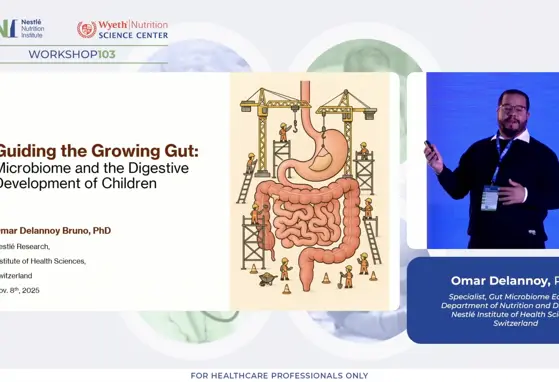Probiotic-prebiotic combination may ease eczema in kids
Combining probiotics and prebiotics to produce a symbiotic may reduce the severity of eczema in children, suggests a new research study that was conducted in Taiwan on 60 children. Supplements, containing a combination of Lactobacillus salivarius and fructo-oligosaccharide and taken for eight weeks, were associated with significant reductions in the severity of eczema, when compared with a control group receiving only prebiotics, according to findings published in the British Journal of Dermatology.
Eczema, also known as Atopic Dermatitis (AD), is regarded as a result of the immune system being delayed in development, and one of the implications of an immature immune system can be allergic manifestations. This is seen in 10 to 20% of all infants, who ultimately outgrow this between 5 and 15 years.
Intestinal microflora plays an important role in enhancing or strengthening the immune system. There are a few researches that discuss how demographic changes can actually influence the intestinal flora of the population, especially in more urbanised communities such as Taiwan. It is therefore important to look at the factors - particularly probiotics and prebiotics - which play a direct part in determining the intestinal microflora of humans.
This study was conducted in children between 2 to 14 years, to determine the efficacy of probiotic and prebiotic combination in improving eczema (Atopic Dermatitis).
The initial population group consisted of 60 children (30 in each group), which decreased to 27 children each in the symbiotic and control groups respectively, due to unforeseen circumstances. During the trial period, the usual treatment or management for AD patients was still implemented.
The control group comprised children with 60% severe eczema, and the remainder, with moderate eczema, who were given only the prebiotic fructo-oligosacharide. This resulted in 20% with severe eczema and 60% with moderate eczema.
The treatment group was given a combination of the probiotic Lactobacillus salivarius and prebiotic fructo-oligosaccharide. In this group, 75% of children initially presented with severe eczema and 25% with moderate eczema. The results were less than 10% with sever eczema, 40% moderate eczema and 50% mild eczema.
It is clear that the prebiotic is also efficient in the reduction or treatment of eczema, but even clearer is how the symbiotic combination is more superior in the treatment thereof.
Arguments that arose from other researches were that probiotics are more efficient in the preventing of eczema, as opposed to the treatment. Others went on to suggest that the observations were only modest.
Probiotics such as Lactobacillus Rhamnosus were observed to also be effective in preventing AD. More suggestions went into how prebiotic and probiotic combinations would be essential in infant formula to prevent AD, however, it was said that more research is required for this.
Taking all that has been said into account, it can be confirmed that the symbiotic use of probiotics and prebiotics is effective in eczema treatment, but a follow-up to assess its long-term effects are of importance.
For further information and access to this article, please click on the link below:
Source: British Journal of Dermatology
January 2012, Volume 166, Issue 1, pages 129-136
“Lactobacillus salivarius plus fructo-oligosaccharide is superior to fructo-oligosaccharide alone for treating children with moderate to severe atopic dermatitis: a double-blind, randomised, clinical trial of efficacy and safety”
Authors: K.-G. Wu, T.-H. Li, H.-J. Peng
Alternatively, copy the link below and paste in your navigation bar:
http://onlinelibrary.wiley.com/doi/10.1111/j.1365-2133.2011.10596.x/abstract
If you liked this post you may also like

Mindful Microbes: The Interplay Between Environment, Gut Microbiome, Brain, and Behavior

Exploring the Crosstalk: Nutrition, Microbiome, and Cardiometabolic Health

Guiding the Growing Gut: Microbiome and the Digestive Development of Children

Nourishing the Microbiome at Preschool age: Dietary influences from infancy to present